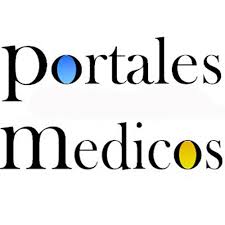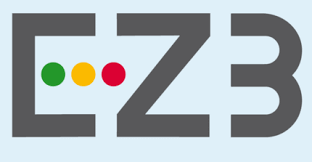Corriente interferencial versus corriente de estimulación nerviosa eléctrica transcutánea en el dolor lumbar crónico de estudiantes universitarios
Interferential current versus transcutaneous electrical nerve stimulation current in chronic low back pain in university students
Resumen
La lumbalgia es una patología común en la población en general y si está presente más de tres meses se considera crónica. El objetivo general de esta investigación fue comparar la eficacia de la Corriente Interferencial con la corriente Estimulación Nerviosa Eléctrica Transcutánea (TENS) en el alivio del dolor lumbar crónico en estudiantes de la Universidad Inca Garcilaso de la Vega en el año 2019. Metodología: enfoque cuantitativo, tipo comparativo, diseño cuasiexperimental con dos grupos (control, experimental), prospectivo y de campo. Se aplicó a sesenta (60) sujetos, distribuidos en dos grupos de treinta (30) cada uno; al experimental, se le aplicó corriente interferencial, y al grupo control, se le aplicó corriente TENS. Resultados: en el grupo experimental la edad fue de 29,2 ± 6,4 años y 56,7% masculino y la del control 29,1 ± 6,6 años y 50,0% masculino. El EVA basal no mostró diferencias entre los grupos, EVA basal (p=,546), EVA durante (p=,362), EVA después (p=,621). Se obtuvo diferencias significativas (p<,001) en el factor (intrasujetos), lo que indica que ambos tratamientos tienen efectos positivos en el EVA, sin embargo, no hubo diferencias según los grupos de investigación (p=,694). Conclusiones: la corriente interferencial y la corriente TENS son eficaces para el alivio del dolor lumbar crónico en los individuos en estudio, con efectividad similar, por lo que podrían ser utilizados según decisión del terapeuta.
Low back pain is a common pathology in the general population and if it is present for more than three months it is considered chronic. The general objective of this research was to compare the efficacy of Interferential Current with Transcutaneous Electrical Nerve Stimulation (TENS) current in relieving chronic low back pain in students of the Inca Garcilaso de la Vega University in 2019. Methodology: quantitative approach, comparative type, quasi-experimental design with two groups (control, experimental), prospective and field. It was applied to sixty (60) subjects, divided into two groups of thirty (30) each, to the experimental one, interferential current was applied and to the control group, TENS current was applied. Results: in the experimental group, the age was 29.2 ± 6.4 years and 56.7% male, and the control group was 29.1 ± 6.6 years and 50.0% male. The baseline VAS does not differ between the groups, baseline VAS (p=.546), VAS during (p=.362), VAS after (p=.621). Significant differences (p<.001) were obtained in the factor (within subjects), indicating that both treatments have positive effects on the VAS, however, there were no differences between the research groups (p=.694). Conclusions: the interferential current and the TENS current are effective for the relief of chronic low back pain in the study individuals, with similar efficacy, so they could be used according to the therapist's decision.
Palabras clave
Texto completo:
PDFReferencias
Albino, MA. (2018). Efectividad de las corrientes interferenciales versus TENS en el dolor lumbar en amas de casa de 40-60 años en el Centro de Terapia Física y Rehabilitación Divino Niño Jesús - 2017. [Tesis de grado, Universidad Alas Peruanas].
Atamaz, F.C., Durmaz, B., Baydar, M., Dermicioglu, O.Y., Iyiyapici, A., Kuran, B.,Oncel, S. y Sendur, O.F. (2012). Comparison of the efficacy of transcutaneous electrical nerve stimulation, interferential currents, and short wave diayhermy in knee osteoarthritis: a double-blind, randomized, controlled, multicenter study. Arch Phys Med Rehabil. 93(5), 748-56.
Cáceres, E. y Sanmartí, R. (1998). Monografías Médico - quirúrgicas del aparato Locomotor. In Herrera Antonio FLHGRA, editor. Lumbalgia y Lumbociatalgia. Barcelona: Masson.
Casado, M.M., Moix, Q.J. y Fernández, J.V. (2008) Etiología, cronificación y tratamiento del dolor lumbar. Clín y Salud. 19(3), 379-392.
Costa, D. y Palma, A. (2005). O efeito do treinamento contra resistência na síndrome da dor lombar. Rev Port Cien Desp. 5(2), 224-34.
Cuenca-Martinez, F., Cortés-Amador, S. & Espí-López, G.V. (2018). Effectivenes of classic physical therapy proposals for chronic non-specific low back pain: a literature review. Phys Ther Res., 21, 16-22.
Dohnert, M.B., Bauer, J.P. & Pavão, T.S. (2015). Study of the effectiveness of interferential current as compared to transcutaneous electrical nerve stimulation in reducing chronic low back pain. Rev Dor São Paulo. 16(1), 27-31.
Facci, L.G., Nowotny, J.P., Tormem, F. & Moça T.F.V. (2011). Effects of transcutaneous electrical nerve stimulation (TENS) and interferential currents (IFC) in patients with nonspecific chronic low back pain: randomized clinical trial. Sao Paulo Med J. 129(4), 206-16.
Ferraz MB, Quaresma MR, Aquino LR, Atra E, Tugwell P & Goldsmith CH. (1990). Reliability of pain scales in the assessmenof literate and illiterate patients with rheumatoid arthritis. J Rheumatol, 17, 1022–4.
Franca, F.R.; Burke, T.N.; Hanada, E.S. y Marques, A.P. (2010). Segmental stabilization and muscular streng thening in chronic low back pain: a comparative study. Clinics 65(10), 1013-1017.
Keskin, E.A., Onur, O., Keskin, H.L., Gumus, I.I., Kafali, H. y Turhan, N. (2012). Transcutaneous electrical nerve stimulation improves low back pain during pregnancy. Gynecol Obstet Invest. 74(1), 76-83.
Loeser, J. (2003). Bonica Terapéutica del dolor. Tercera ed. México: McGraw-Hill.
López AE. (2017). Acortamiento de psoas iliaco y dolor lumbar en pacientes del Hospital III EsSalud Chimbote – 2017. [Tesis de grado, Universidad San Pedro].
Maher, C.G. (2004). Effective physical treatment of chronic low back pain. Orthop Clin North Am., 35(1), 57-64.
Rajfur, J., Pasternok, M., Rajfur, K., Walewicz, K., Fras, B., Bolach, B., Dymarek, R., Rosinczuk, J., Halski, T. y Taradaj, J. (2017). Efficacy of Selected Electrical Therapies on Chronic Low Back Pain: A Comparative Clinical Pilot Study. Med Sci Monit., 23, 85-100.
Salvetti, M., Pimenta, C.A., Braga, P.E. & Correa, C.F. (2012). Disability related to chronic low back pain: prevalence and associated factors. Rev Esc Enfer USP. 46, 16-24.
Silva, M.C., Fassa, A.G. y Valle, N.C. (2004). Chronic low back pain in a Southerns Brazilian adult’s population: prevalence and associated factores. Cad Saude Publica. 20(2), 377-85.
Zambito, A., Biechini, D., Gatti, D., Viapiana, O., Rossini, M. & Adami, S. (2006) Interferencial and horizontal therapies in chronic low back pain: a randomized, double-blind, clinical study. Clin Exp Rheumatol., 24(5), 534-39.
Enlaces refback
- No hay ningún enlace refback.
Depósito Legal Electrónico: ME2016000090
ISSN Electrónico: 2610-797X
DOI: https://doi.org/10.53766/GICOS
| Se encuentra actualmente registrada y aceptada en las siguientes base de datos, directorios e índices: | |||
 | |||
 |  |  |  |
 |  | ||
 |  |  |  |
 |  |  |  |
 |  |  |  |
 |  | ||
![]()
Todos los documentos publicados en esta revista se distribuyen bajo una
Licencia Creative Commons Atribución -No Comercial- Compartir Igual 4.0 Internacional.
Por lo que el envío, procesamiento y publicación de artículos en la revista es totalmente gratuito.

